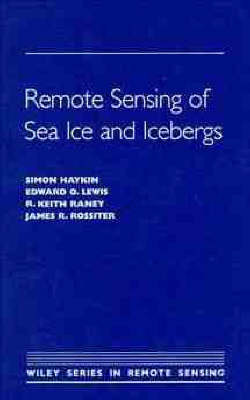Wiley Series in Remote Sensing and Image Processing
1 total work
Remote Sensing of Sea Ice and Icebergs
by Simon Haykin, Edward O. Lewis, R. Keith Raney, and James R. Rossiter
Published 2 November 1994
The most recent sensing technologies as they apply to the study of sea ice and its properties are presented in this text. The contributors describe technologies that include acoustic sensing, ice thickness and measurement, ground wave radar, and passive microwave remote sensing. Surface-based radar, coherent and non-coherent, operational airborne radars, synthetic aperture radar and RADARSAT are examined for their usage in the detection of ice hazards in the marine environment. There is also coverage of the mapping of surface currents, sea-state and surface winds, the study of ice dynamics, ice transportation, oil spill counter-measures, climate changes and ice reconnaissance.
